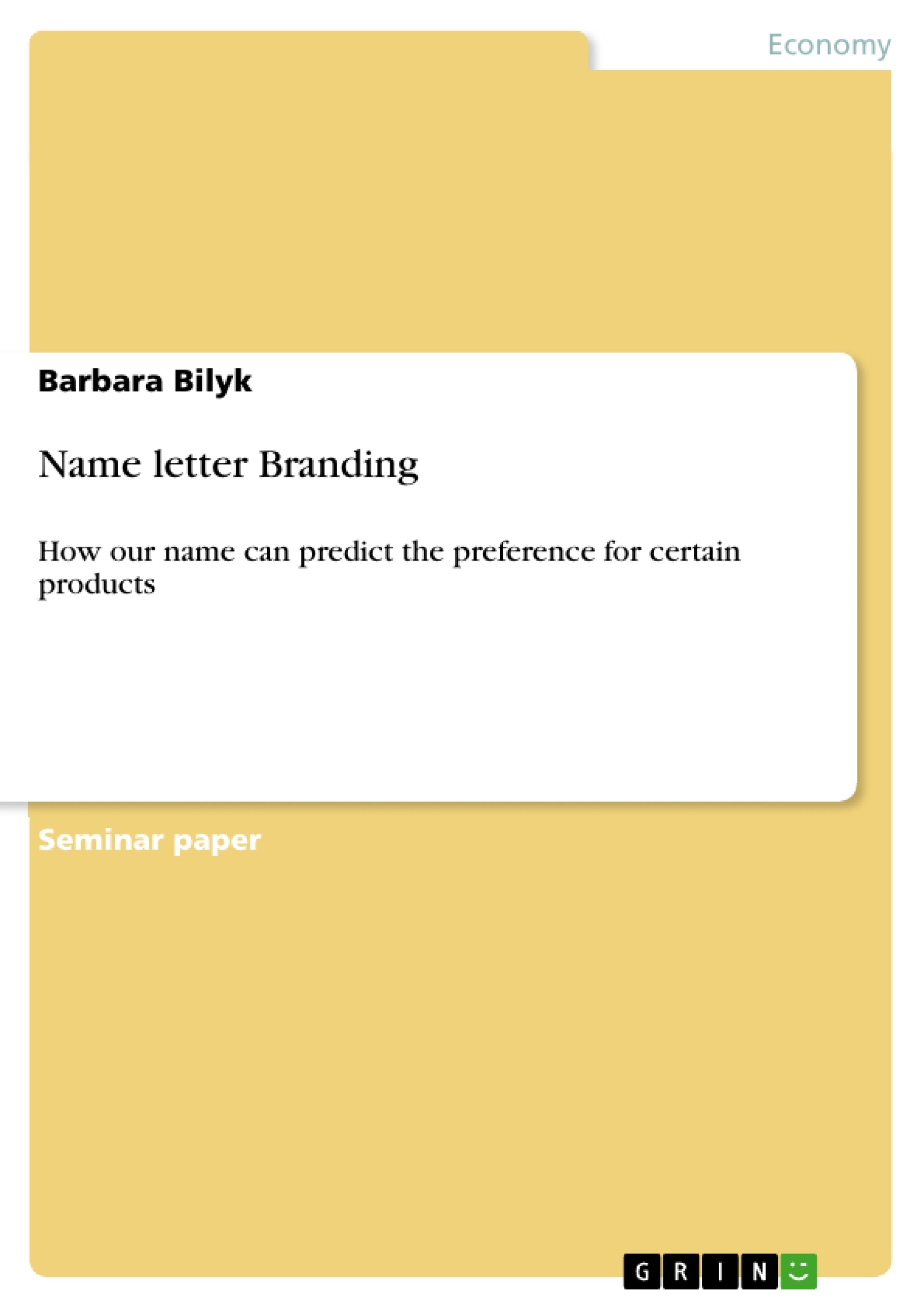Is it just coincidence that Fabian decided to become a farmer, married Franziska, lives in Frankfurt, prefers Ferrero Küsschen and holds shares of his favourite chocolate producer or was he influenced by the shared name letter (NL)? Although the latter sounds indeed bizarre, prior research has given proof of the fact that people’s liking for their own name can affect major life decisions as well as consumption choices (Pelham, Mirenberg, Jones, 2002; Brendl, Chattopadhyay, Pelham, Carvallo, 2005). In the field of consumer behavior it is therefore of high interest to understand the customer’s motives for consumption including the influence of specific conditions and moderating factors. The reason for this concern is the overall ambition of marketers to predict consumer preferences in advance and to tailor offers and goods ac-cordingly. While the importance of the marketing tool “brand name” has been recognized in terms of eliciting meanings and forming brand equity for a long time (Wänke, Herrmann, Schaffner 2007), shared letters of consumer and brand name as a trigger for decisions are a comparatively new insight. In this regard two possibile directions of outcomes are conceiv-able. On the one hand consumers might have the tendency to favour brand names including their own name letters, an effect called name letter branding (NLB) (Brendl et al., 2005). On the other hand the reversed effect name letter repulsion (NLR) which is the alientation from a brand name due to shared name letters might occur (Kachersky, 2008). Consequently this pa-per aims at sheding light on the following question: why and how can people’s preference for or repelling from brand names be generated by their own name?
Inhaltsverzeichnis (Table of Contents)
- Introduction
- Theoretical conceptualization
- Name letter effect
- Implicit egotism and implicit distancing
- Self-concept
- Empirical Studies
- Methods
- Results
- Discussion
- Summary
- References
Zielsetzung und Themenschwerpunkte (Objectives and Key Themes)
This term paper explores the phenomenon of name letter branding (NLB), investigating how people's preference for or aversion to brand names can be influenced by their own name letters. The paper examines the name letter effect, implicit egotism and implicit distancing, and their implications for consumer behavior. It aims to shed light on why and how name letters can act as a trigger for consumer decisions.
- Name letter effect and its influence on consumer preferences
- Implicit egotism and how it can lead to name letter branding
- Implicit distancing and its potential to create name letter repulsion
- The role of self-concept in mediating name letter effects
- The relationship between name letters and consumer behavior
Zusammenfassung der Kapitel (Chapter Summaries)
- Introduction: This chapter introduces the concept of name letter branding and its potential impact on consumer behavior, highlighting the existing research on the name letter effect and its implications for marketing strategies.
- Theoretical conceptualization: This chapter provides a comprehensive overview of the theoretical underpinnings of name letter branding. It defines the name letter effect and explores its origins, discusses the mechanisms of implicit egotism and implicit distancing, and emphasizes the role of self-concept in shaping individuals' responses to stimuli related to their own name.
- Empirical Studies: This chapter delves into empirical studies investigating the relationship between name letters and consumer preferences. It outlines the methods used in these studies and presents the key findings, providing evidence for the existence of name letter branding and its potential impact on decision-making.
Schlüsselwörter (Keywords)
This term paper focuses on the key concepts of name letter branding (NLB), name letter effect (NL), implicit egotism, implicit distancing, self-concept, consumer behavior, marketing, and decision-making. It explores how these concepts interact to influence individual preferences and purchasing decisions. The paper specifically investigates the role of name letters as a trigger for consumer choices and the implications of this phenomenon for marketing strategies.
- Citation du texte
- Barbara Bilyk (Auteur), 2010, Name letter Branding, Munich, GRIN Verlag, https://www.grin.com/document/159207



